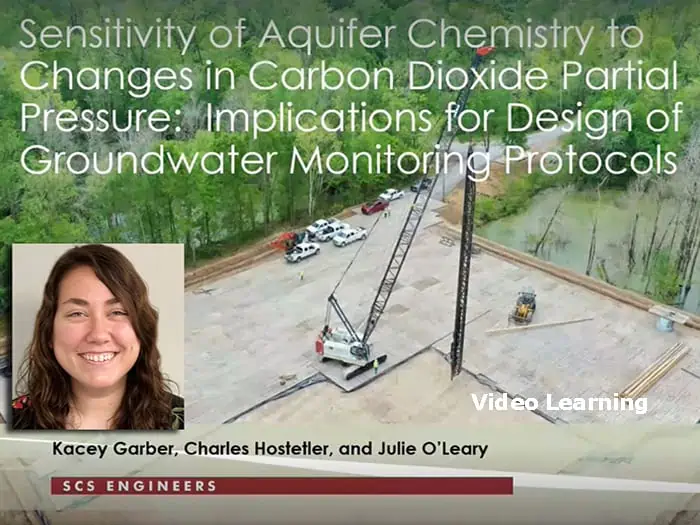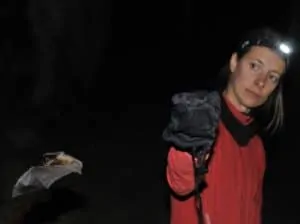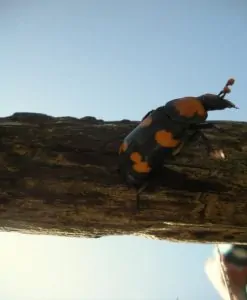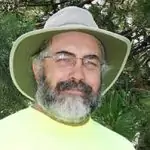


Did you miss the 2022 Annual GWPC & UIC Conference in Salt Lake City? We welcome you to view SCS Engineers’ presentation by Kacey Garber entitled “Sensitivity of Aquifer Chemistry to Changes in Carbon Dioxide Partial Pressure: Implications for Design of Groundwater Monitoring Protocols,” where Kacey discusses permitting requirements for groundwater monitoring for carbon sequestration and storage sites.
In her technical presentation, Kacey Garber of SCS Engineers discusses the great care taken in the design and operation of the injection of carbon compounds to ensure that the sequestration is effective and permanent. Each injection site also has permitting requirements for groundwater monitoring in any overlying aquifer as a protective measure. Because the injection and sequestration periods are long, CSS solutions need a cost-effective groundwater monitoring program with a robust sensitivity to detect any leakage. By establishing a groundwater monitoring protocol specific to the site, sensitive to changes in the partial pressure of carbon dioxide, and relatively insensitive to natural variability and hydrochemical facies changes, implementing optimal and cost-effective groundwater protection is possible. Using a case study, Kacey tells us how her team did this in detail.
Kacey Garber is an experienced groundwater project manager for active and closed landfills, including routine groundwater monitoring and statistical analyses; reports and permit applications; designing sampling and analysis plans; special groundwater studies; and conducting groundwater well construction planning and design.
In an environmentally safe, less costly, and efficient manner, the disposal and recycling of millions of gallons of production water (brine water) and flowback water generated from the oil and gas industry annually continue to be challenging. While new technologies are on the horizon, there remains a long road ahead to their implementation.
In his article in Geosynthetic News, Neil Nowak writes in detail about three sites in Wyoming, Utah, and Texas that are evaporating or recycling water in geomembrane-lined ponds. Nowak’s article demonstrates the successful use of black high-density polyethylene (HDPE) liners to increase evaporation over clay or unlined ponds and using a white liner to reduce evaporation relative to a black liner.
Each project has been operational for several years; they continue to expand under their permits. Nowak takes us through a combination of favorable factors to the evaporative process, including the natural characteristics of each sites’ climate and the business and environmental goals.
The projects are interesting in that each facility provides oil and gas production companies in the area with a large commercial alternative to production water and flowback disposal versus numerous small ponds or disposal via injection wells.
About the Author: 
Mr. Nowak has managed environmental compliance, evaporation pond design and permitting, and construction quality assurance activities across the Southwest. As a land-use planner and Environmental Engineer, he explains how various environmental technologies work under specific conditions to companies and the public. Often he is called to public comment meetings and county commissioner meetings, where he prepares and presents project details for review and approval. He works closely with local, state, and federal regulatory agencies to ensure that the engineering and construction of sites comply with all current applicable requirements.

Her work focuses on waste disposal facility siting, design, permitting, and construction; design, permitting, and construction of landfill gas collection and utilization systems; landfill gas collection system operation and monitoring and air permitting and compliance; renewable energy projects; and construction management.

She retains her passion for Indian classical dance and Carnatic music, continuing to perform in the U.S. while meeting environmental challenges and goals of her clients.
CQA is essential for ensuring the proper construction of GCCS and meeting the intent of the design, and can help prevent safety mishaps. Even highly experienced design-build teams invest in expert CQA professionals to protect their capital investment, maintain maximum LFG capture through constructed GCCS, and keep operating and maintenance costs in line. It is critical for CQA person-nel to understand the overall intent of the design drawings, current field conditions, long-term conditions, and strict safety protocols. They must also have the expertise to respond to the questions contractors have during construction, especially regarding modifications to the design which will positively impact safety, long-term performance, and maintenance.
Part 1 of the 3-part article series in MSW Magazine discussed essential elements of the piping system in a landfill gas collection and control system (GCCS). The authors examine landfill GCCS design perspective and the benefits of designing landfill gas (LFG) headers outside of the waste boundary. In Part 2, we focus on construction quality assurance (CQA) services and outline the process of taking the design drawings through completion of the CQA report.
Read Part 2 here. Contains link to Part 1.
Sensitive natural resources include but are not limited to the following: Threatened and Endangered (T&E) species and their habitats, wildlife refuges, wetlands, and tribal burial grounds. These are areas where federal or states have identified protected resources. SCS Engineers has the expertise and credentials to perform surveys for clients with projects requiring the identification of these sensitive resources, along with the regulatory permitting with specialization in threatened and endangered species, wetlands, and critical habitats.

Development and construction often occur near or within areas identified as sensitive natural resources. Responsible developers identify sensitive resources near or within their proposed project area as part of their development plans because protecting our nation’s natural resources is important. The protection of sensitive natural resources is the basis of the Federal Endangered Species Act, Clean Water Act, and National Historical Preservation Act. Projects under consideration in sensitive areas require special permits; without which projects can be shut down causing costly contractor delays and schedule disruptions. Post-permitting and the associated fines can be severe, so even if you are not a conservationist, it makes good sense to complete the permitting process before breaking ground.

When considering a project in potentially sensitive ecological areas, SCS Engineers recommends a constraint analysis be performed. The analysis will determine if the proposed project location is within wetlands, critical habitat, threatened and endangered species range, and other potential constraints. If it is, SCS recommends that a site assessment is performed and initiate agency consultation to protect the sensitive resources.
Both the permitting process and the preliminary ecological assessments are not difficult but do require credentialed specialists. SCS has geologists, hydrologist, hydro-geologists, and environmental compliance professionals nationwide. SCS Engineers even has credentialed biologists for specialized threatened and endangered species monitoring and assessments for several species that include but not limited to the American Bury Beetle, Arkansas Shiner, Arkansas Darter, Topeka Shiner, Neosho Mucket Mussel, Rabbitfoot Mussel, Northern Longear Bat, and Indiana Bat in the Central U.S.
To determine if a project is within a sensitive natural resource area or to schedule an ecological consultation, contact .
About the Author: Vaughn Weaver

In addition, he has 15 years of water quality experience with National Pollution Discharge and Emissions Systems (NPDES) for point source and non-point source permits. Vaughn is also a Certified Wetland Delineator – USACOE.
An SCS Engineers Technical Bulletin will be released early in the week.
The U.S. Environmental Protection Agency issued limits on methane emissions from oil and gas wells that are more stringent than those it proposed last year. The final regulations released on Thursday, May 12, 2016, will add hundreds of millions in additional costs per year; at least 25 percent higher than the preliminary version published in August 2015.
EPA Administrator Gina McCarthy told reporters on a conference call that the mandates, applying immediately to new and modified wells, are a “critical first step in tackling methane emissions from existing oil and gas sources.”
Under the rule, companies must upgrade pumps and compressors while expanding the use of “green completion” technology meant to capture the surge of gas that can spring out of newly fracked wells. Such green completion techniques have been required for new and modified natural gas wells since 2015, but Thursday’s rule would broaden the requirement to oil wells too.
Take me to the EPA summaries. Click on the information sheets listed below: